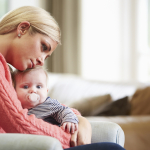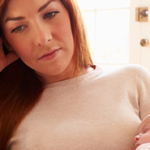In the United States, about one out of every 160 pregnancies ends in stillbirth, defined as a pregnancy loss occurring after 20 weeks’ gestation. Perinatal loss is a traumatic event for women and their families. While we clearly understand the potential for perinatal loss to cause significant emotional consequences, we have relatively little data on the prevalence of anxiety and depressive illness in this population of women.
The Stillbirth Collaborative Research Network was established in 2003 to examine the etiology and epidemiology of stillbirth in the United States. The network includes five clinical research sites at universities across the country. A recent study analyzed data from women in this network, examining the prevalence of depression among women who had experienced a stillbirth.
Depressive symptoms were assessed at 6-36 months after the index delivery 275 women who delivered a stillbirth and 522 women who had delivered a healthy liveborn infant (37 or more weeks’ gestation). Depression was defined as a score above 12 on the Edinburgh Depression Scale.
Depression was more common in women who had a stillbirth (14.8%) compared to women who delivered a healthy liveborn child(8.3%). When the researchers looked only at women with a history of depression, they no longer observed an association between stillbirth and risk for depression. Conversely, for the 76% of women with no history of depression, a significant association remained after adjustment for confounders (aOR 1.98 [95% CI 1.02, 3.82]).
One might wonder if the women who have elected to participate in this research network are somehow different from other populations assessed, in that the prevalence of depression seems relatively low. In another study which surveyed 609 women who had experienced a stillbirth or an infant death before 28 days of age, depression was much more common. Compared to women who had had a live birth, women who had experienced a perinatal loss had a nearly 4-fold higher odds of having a positive screen for depression and a 7-fold higher odds of a positive screen for post-traumatic stress disorder.
Clinically we see a fair number of women who have experienced a stillbirth, and I am always impressed by the emotional strength and resilience which characterizes this group of women. Most women who experience a pregnancy loss will go on to attempt another pregnancy, and that decision to embark upon another pregnancy is often complicated.
Women who have experienced a stillbirth are at risk for depression and anxiety immediately after that loss, but the vulnerability follows them into their subsequent pregnancies. According to a recent study carried out in Norway, women who were pregnant after a stillbirth were more likely to experience anxiety (22.5%) and depression (19.7%) during the third trimester of pregnancy, as compared to women with a previous live birth (adjusted odds ratio (aOR) 5.47 for anxiety and aOR 1.91 for depression) and previously nulliparous women (aOR 4.97 for anxiety and aOR 1.91 for depression).
Looking at the postpartum period, women who had experienced a stillbirth continued to be at greater risk for anxiety than women who had not experienced a stillbirth. Anxiety and depression decreased six to 18 months after the birth of a live-born baby, but increased again 36 months postpartum. The prevalence of depressive symptoms was similar across all groups. Relationship satisfaction did not differ between the three groups.
Based on these findings, we recommend that healthcare providers should routinely screen for symptoms of depression and anxiety among women after stillbirth, as well as during subsequent pregnancies. In addition, couples who have experienced a stillbirth may benefit from the support of others who have had a similar experience. The American Pregnancy Association provides a list or resources for families who have experienced a stillbirth.
Ruta Nonacs, MD PhD
Gold KJ, Leon I, Boggs ME, Sen A. Depression and Posttraumatic Stress Symptoms After Perinatal Loss in a Population-Based Sample. J Womens Health (Larchmt). 2016 Mar;25(3): 263-9.
Gravensteen IK, Jacobsen EM, Sandset PM, Helgadottir LB, Rådestad I, Sandvik L, Ekeberg Ø. Anxiety, depression and relationship satisfaction in the pregnancy following stillbirth and after the birth of a live-born baby: a prospective study. BMC Pregnancy Childbirth. 2018 Jan 24;18(1):41.
Hogue CJ, Parker CB, Willinger M, et al. The association of stillbirth with depressive symptoms 6-36 months post-delivery. Paediatr Perinat Epidemiol. 2015 Mar;29(2):131-43.








Thank you for sharing